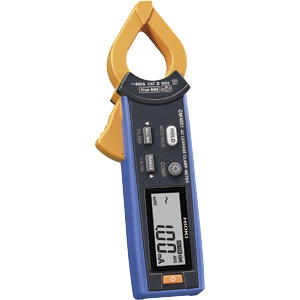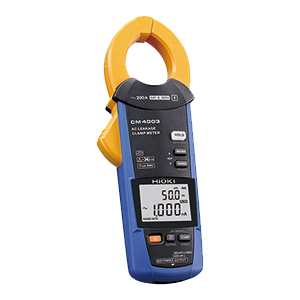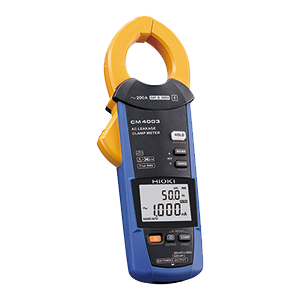Detecting an intermittent electrical leak
Associated issues

- A customer notifies you that an electrical leakage breaker has tripped, but when you investigate, you can’t find anything amiss.
- You suspect an intermittent electrical leak but don’t know which branch circuit is being affected.
- You don’t know what’s causing the problem, and so you can’t correct it.
Solved by GENNECT Cross!
- You can record the time at which intermittent leakage currents start and stop, as well as their magnitude.
- You can identify which branch circuit is causing the problem.

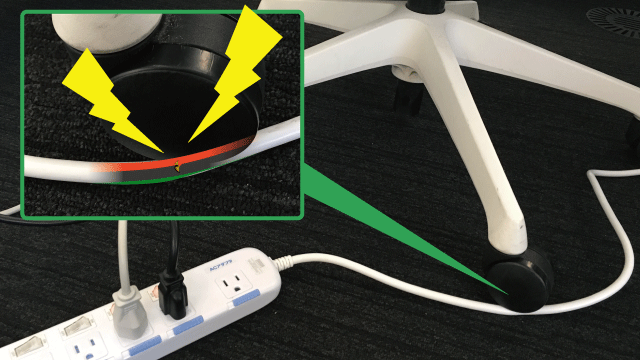
Measurement example for a single-phase circuit
To simplify this description, we’ll use a small, single-phase panel like you’d find in a home, as shown in the figure.
Since you can restore power after the electrical leakage breaker trips, you suspect an intermittent electrical leak. However, you don’t know which branch circuit is responsible.
Using the GENNECT Cross event recording function, you ascertain which branch circuit is causing the problem.
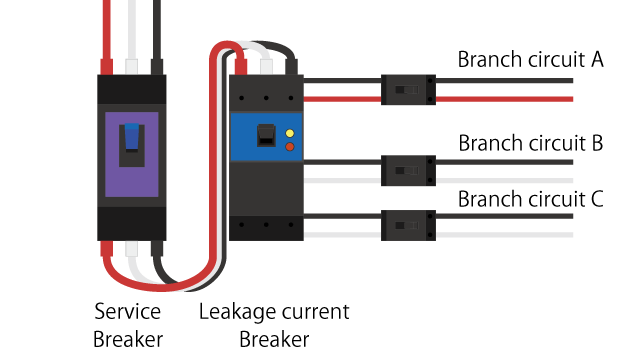
- Set the threshold value and recording time in GENNECT Cross.
First, determine the threshold value to use with the event recording function. The event recording function records the start time, end time, and maximum leakage current when a leakage current greater than or equal to the threshold value is detected.
For more information about the event recording function, see the following page.
To determine the threshold value, you’ll need to do the following:
- Measure the normal leakage current. If you set the threshold value to a value that is less than or equal to that leakage current, events will occur continuously, preventing proper measurement.
- Determine the value based on the electrical leakage breaker’s specifications. You can predict the size of the leakage current that caused the electrical leakage breaker to trip based on the rated sensed current, the rated non-operation current, and the operation time. That will determine the threshold value that can be measured as an event. If you set a lower threshold value, you can also record small leakage currents that don’t trip the electrical leakage breaker.
*The CM4001 can record up to 99 events. The CM4002 and CM4003 can record up to 999 events.
Since the instrument is powered by a battery, check the following so that you can make measurements for the maximum possible amount of time:
- Replace the battery with a new one.
- Once measurement starts, turn off Bluetooth® communications. There’s no need to enable Bluetooth® while measurement is in progress since event data will be stored by the instrument.
*The CM4001 has a continuous measurement time of about 1 day. The CM4002 and CM4003 have a continuous measurement time of about 2 days. The CM4003 can also be powered by an AC adapter.
- Attach the instrument.
Attach the CM4002 or CM4003 (clamp sensor diameter: ⌀40 mm) on the secondary side of the service breaker. Attach the CM4001 units, which have a smaller sensor opening (⌀24 mm), to the branch circuits.
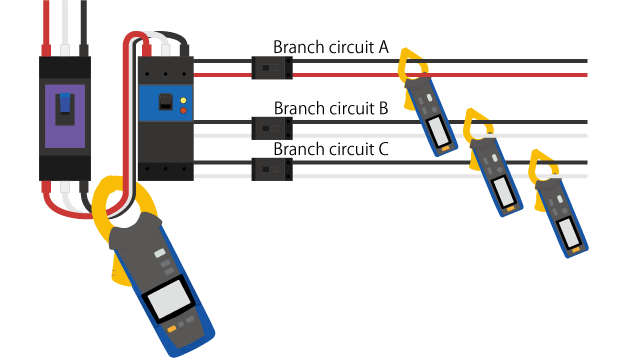
- Tap the [Start measurement] in GENNECT Cross to start recording.
Once you start recording, there’s no need to connect the instruments to GENNECT Cross. Since you can extend the instruments’ battery life by disabling the Bluetooth® communications function, the recording time will be lengthened.
- Once recording ends, connect the instruments to GENNECT Cross again and collect the recorded data.
Once the set recording time has elapsed, the instruments will stop recording. If an instrument has recorded data for even one event, its LCD backlight will turn red.
Enable the instruments’ Bluetooth® communications function and connect them to GENNECT Cross. When GENNECT Cross collects the event data recorded by the instruments, it will be displayed immediately as a graph.
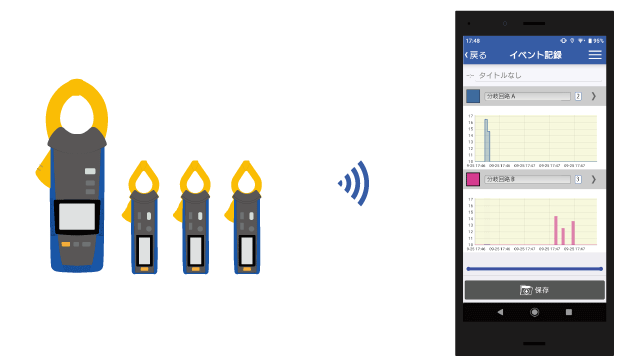
In this case, event data recorded using the four leakage current meters will be displayed on a graph with a single time axis. You can assess the following information based on the event data (event time, end time, and maximum current) and use it to help you track down the cause of the intermittent electrical leak:
- The time at which the electrical leakage breaker tripped and the electrical leak recorded for branch circuit A match. Branch circuit A is likely the cause of the intermittent electrical leak.
- Branch circuits B and C are experiencing a simultaneous electrical leak. However, those leaks fall within the electrical leakage breaker’s non-operation range. Branch circuits B and C may have latent, correlated problems.
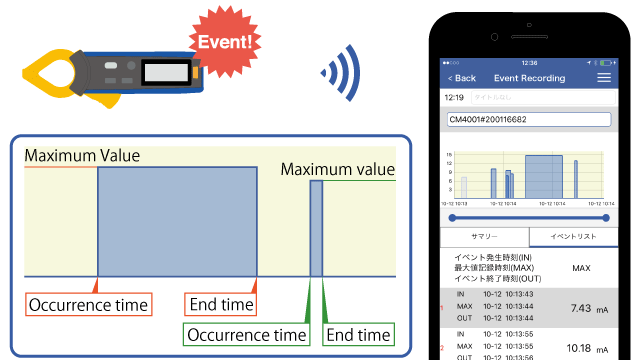
Use a power meter or waveform recorder if you’re unable to solve the problem.
If you want to make measurements for a longer period of time or conduct more detailed measurements, you should use a power meter or waveform recorder in the usual manner.
The CM4003 provides functionality for outputting waveforms and RMS values, so its output signals can be recorded using a power meter or waveform recorder in order to make more detailed measurements. In addition, it can be powered by an AC adapter, affording greater peace of mind when you need to record for longer periods of time.

GENNECT Cross functions used
Supported instruments
